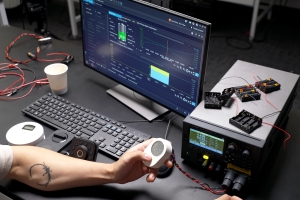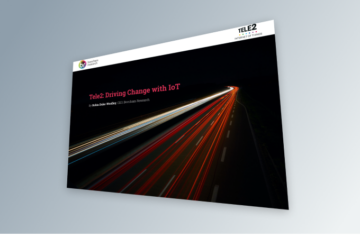Integrated SIM (iSIM) technology emerges as the latest advancement in the realm of telecommunications, pushing the boundaries of integrated connectivity further than ever before. Building on the foundation laid by its predecessors, including the traditional SIM, eSIM, and eUICC technologies, iSIM represents a significant leap towards more efficient, secure, and streamlined mobile and IoT device connectivity. This article delves into the concept of iSIM, exploring its inception, key features, and the transformative impact it promises to have on the telecommunications landscape.
Understanding iSIM technology
iSIM technology integrates the functionality of a SIM card directly into the device’s main processor or system on a chip (SoC), eliminating the need for a separate embedded chip for the SIM functions. This innovation not only saves space within devices but also enhances security and potentially reduces manufacturing costs.
Design and integration
iSIM technology is designed to be an integral part of the device’s SoC, which houses the device’s central processing unit (CPU), network connectivity modules, and now, the SIM functionality. This integration allows for a smaller device footprint, paving the way for even more compact and efficient designs in mobile phones, wearables, and a wide array of IoT devices.
Enhanced security and functionality
By incorporating the SIM functionality directly into the SoC, iSIM technology offers enhanced security features. The closer integration facilitates improved data protection and device authentication processes, making devices more resistant to hacking and fraud. Additionally, like eUICC, iSIM supports remote provisioning and management of mobile network subscriptions, offering the flexibility to switch operators without physical SIM swaps.
The impact of iSIM technology
Revolutionising device design
The integration of SIM functionality into the SoC with iSIM technology allows for unprecedented design innovation in the device manufacturing industry. It opens up space within devices that can be used for additional features or to further slim down device profiles. This is particularly beneficial for wearables and IoT devices, where space is at a premium.
Facilitating global connectivity
iSIM technology simplifies the process of connecting devices across different regions and networks. It supports the global IoT vision, where devices can seamlessly switch between networks anywhere in the world, ensuring optimal connectivity without geographical constraints. This global roaming capability is crucial for industries such as automotive, where connected vehicles require uninterrupted access to network services.
Streamlining IoT deployment
For IoT ecosystems, iSIM technology offers a streamlined approach to deploying and managing devices at scale. The ability to remotely provision and manage network subscriptions greatly reduces the logistical complexity associated with large-scale IoT deployments, enabling more efficient and flexible operations across diverse sectors.
In summary
- Characteristics:
- Embedded directly into the device’s SoC, minimising space
- Utilises SoC’s secure environment for improved data protection
- Allows over-the-air updates and carrier switches
- Usageand features:
- Streamlines design and enhances flexibility in carrier selection
- Enables compact designs and global connectivity for diverse applications
- Frees up physical space for other device functionalities
- Facilitates seamless network switching and worldwide coverage
- Pros
- Eliminates the need for separate SIM card components
- Integrates SIM functions into a secure SoC environment
- Cons
- Tied to the device’s lifespan, limiting transferability
- Potentially higher initial costs for integrating into the SoC
Comment on this article via X: @IoTNow_
- SEO Powered Content & PR Distribution. Get Amplified Today.
- PlatoData.Network Vertical Generative Ai. Empower Yourself. Access Here.
- PlatoAiStream. Web3 Intelligence. Knowledge Amplified. Access Here.
- PlatoESG. Carbon, CleanTech, Energy, Environment, Solar, Waste Management. Access Here.
- PlatoHealth. Biotech and Clinical Trials Intelligence. Access Here.
- Source: https://www.iot-now.com/2024/02/27/142445-part-7-isim-technology/
- :is
- :not
- :where
- $UP
- 5
- 6
- 7
- 8
- a
- ability
- access
- across
- Additional
- Additionally
- advancement
- allows
- also
- an
- and
- anywhere
- approach
- Array
- article
- AS
- associated
- At
- Authentication
- automotive
- BE
- before
- beneficial
- between
- boundaries
- Building
- but
- by
- CAN
- capability
- card
- central
- chip
- closer
- compact
- complexity
- concept
- Connecting
- Connectivity
- constraints
- Costs
- CPU
- crucial
- data
- data protection
- delves
- deploying
- deployments
- Design
- designed
- designs
- device
- Devices
- different
- directly
- diverse
- down
- Ecosystems
- efficient
- eliminating
- embedded
- emerges
- enabling
- enhanced
- Enhances
- ensuring
- Environment
- Even
- EVER
- Exploring
- facilitates
- Features
- Flexibility
- flexible
- Footprint
- For
- Foundation
- fraud
- functionality
- functions
- further
- geographical
- Global
- greatly
- hacking
- Have
- higher
- houses
- HTTPS
- Impact
- improved
- in
- inception
- Including
- incorporating
- industries
- industry
- initial
- Innovation
- integral
- integrated
- Integrates
- Integrating
- integration
- into
- iot
- iot devices
- IT
- ITS
- jpg
- Key
- laid
- landscape
- large-scale
- latest
- Leap
- lifespan
- like
- limiting
- Main
- Making
- manage
- management
- managing
- manufacturing
- manufacturing industry
- Mobile
- mobile phones
- Modules
- more
- more efficient
- Need
- network
- networks
- news
- now
- of
- offering
- Offers
- on
- only
- opens
- Operations
- operators
- optimal
- or
- Other
- part
- particularly
- Paving
- phones
- physical
- plato
- Plato Data Intelligence
- PlatoData
- potentially
- Premium
- process
- processes
- processing
- Processor
- Profiles
- promises
- protection
- provision
- Pushing
- realm
- reduces
- regions
- remote
- remotely
- Reports
- represents
- require
- resistant
- Scale
- seamless
- seamlessly
- Sectors
- secure
- security
- separate
- Services
- significant
- SIM
- SIM Card
- simplifies
- smaller
- Space
- streamlined
- subscriptions
- such
- Supports
- Swaps
- Switch
- system
- Technical
- Technology
- telecommunications
- than
- that
- The
- the world
- this
- to
- towards
- transformative
- uninterrupted
- unit
- unprecedented
- Updates
- used
- via
- vision
- Way..
- wearables
- which
- wide
- with
- within
- without
- world
- worldwide
- writer
- X
- zephyrnet













